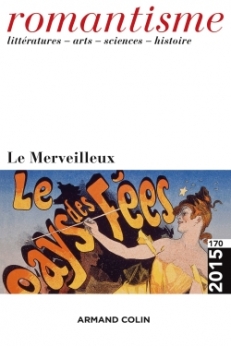
Romantisme n° 170 (4/2015)
Pour acheter ce numéro, contactez-nous
Recevez les numéros de l'année en cours et accédez à l'intégralité des articles en ligne.
Parmi les récits brefs stendhaliens, seule Vanina Vanini ne revendique pas explicitement le statut de texte transposé ou adapté. Tantôt on l’assimile aux Chroniques italiennes, tantôt on l’en exclut, ou encore on la qualifie de micro-roman. L’auteur suggère que Vanina contient le potentiel esthétique d’un roman. Prenant cette formule comme point de départ, l’article s’attache à montrer que si les actions et les attitudes de l’héroïne de la nouvelle stimulent en effet le déploiement du registre romanesque, celles de sa contrepartie masculine, en connivence avec la figure du père, tendent au contraire à l’enrayer. L’écriture ludique de Vanina ne prétend peut-être souscrire au code romanesque que pour mieux désamorcer, au profit du récit bref, les postulats et les modalités qu’il présuppose.
Among Stendhal’s short stories, only Vanina Vanini does not explicitly claim to be a tale retold from another source. It is at times seen to be one of the Chroniques italiennes (Italian Chronicles), at times excluded from that series, or still yet characterised as a micro-novel. The author suggests that Vanina has the aesthetic potential of a novel. With this as a starting point, the paper focuses on showing that if the actions and attitudes of the heroine stimulate the development of a novelistic register, those of her masculine partner, in tandem with those of the father, contribute to stopping it in its tracks. The playful writing in Vanina may well subscribe to the codes of the novel only to better undo the postulates and modalities it presupposes – in favour of the short story.

